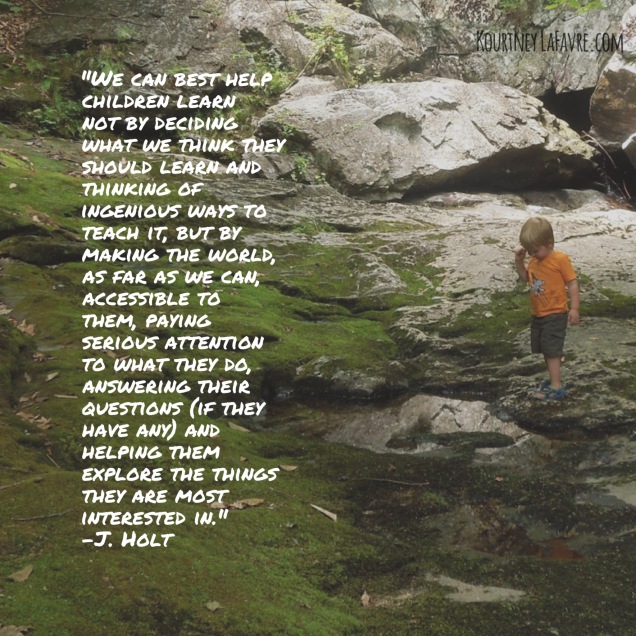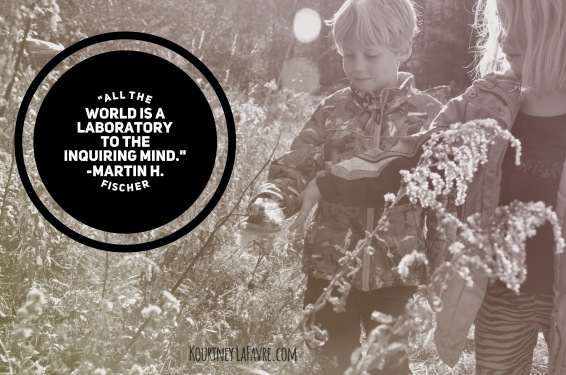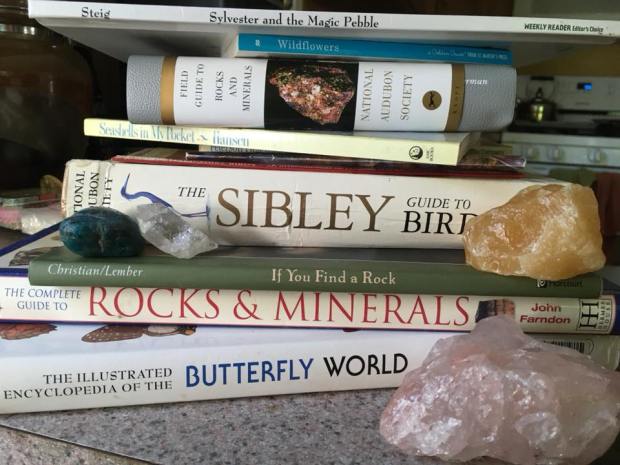My daughter and I were waiting for the bus at the airport after a fabulous mother-daughter trip to visit my grandmother. We just had four days of bonding and connecting. We were able to visit “Butterfly World” a butterfly and bird aviary, where we sat among luxurious greenery and tropical flowers while butterflies and birds fluttered around us. We watched butterflies emerging from their chrysalis and fed lorikeets that landed on our arms. We enjoyed our time getting lost in the beauty and experiencing awe and wonder. We observed, connected, asked questions, and found answers. There was no rushing, no bells ringing or people telling us it was time to move to the next experience. The only time we were told to look at something was when someone else saw something amazing and pointed it out. We were driven by curiosity and a love of nature. We were free to explore, experience, and connect. We had a guidebook to identify the things we saw, if we wanted to. We also had journals to write and draw what we observed, discovered, and learned…if we wanted to record it. There was no agenda, no checklist of things to see and do, no benchmarks, and no tests.
These beautiful memories were occupying my head space when a woman, who was waiting for the same bus as my daughter and I, started engaging us in conversation. We did the typical small talk that strangers do when waiting for a bus, “Where are you coming from? Where are heading?” sort of questions. Then the kind woman asked my daughter “Are you excited to go back to school tomorrow?” To which my daughter responded nonchalantly “I don’t go to school.” The woman looked at me confused, I smiled, and she asked my daughter “What do you mean you don’t go to school?” My daughter repeated her original statement and the woman didn’t respond. Well not with words anyways, just a look of shock and confusion. At this point I realized how differently we do things, and also how little people understand about life without school. As I was about to respond with probably a really long explanation, my brilliant daughter chimed in with “We homeschool.” The woman relaxed and the conversation kept flowing.
It is really hard to explain what we do. Not because I don’t know what we do, I feel I can eloquently explain what we do. But because the majority of people only know how to think of children in terms of school, they can’t relate to a childhood without school. We use the term homeschool but I don’t feel like that represent what we do. My daughter recognized the woman’s discomfort and used the term homeschool to ease the tension and to put in a way that would make it more understandable. (My 8 year old daughter is amazingly brilliant, especially her people skills!)
Our trip to “Butterfly World” is one example of what we do without school. So to help people develop their understanding of a life without school, I made a list of what we do (and don’t do). Insert Forest Gump, “Mamma always had a way of explaining things so I could understand them.”
We don’t stay home, but when we need to… we stay home. We are purposeful with our choices so that we have time to be home. To enjoy our home and surroundings. To rest if we need to.
We all pitch in for housekeeping and life living: house maintenance and repairs, cleaning, food shopping, and pet care.
We play. We play everyday.
We create art when we are inspired to do so. We paint, draw, build, sculpt, and sew.
We don’t do school at home. Which means we don’t replicate a school schedule at home. There is no set schedule for learning to take place. We don’t make sure we are doing the same things at the same time as the local school district.

We live life together as a family. We take turns, laugh, help, support and encourage each other.
We engage in science experiments, together as a family or in organized groups.
We ask questions, explore, and discover. We read. We read a lot. We read for pleasure and to acquire knowledge. We make connections to things we read. We connect to ourselves, others, other books, and experiences. Teachers have terms for these connections: text-to-self, text-to-text, and text-to-real world.
We write letters. We write about what we know, what we are curious about, or how we are feeling. We write stories, real and imaginary. We have journals for writing and handwriting workbooks for practice.
We are not limited by one room or one building. We don’t wait to be told what to learn about and how to learn it.
We are curious. We ask questions and seek out answers. We connect with experts on the topics we are curious about.
We utilize many resources: people, places, and things. Libraries, museums, parks, playgrounds, science centers, community events, beaches, hiking trails, businesses, professionals, teachers, books, magazines, and internet resources.

We regularly spend time with friends of different ages. Some friends go to school and some don’t. Some friends school at home and some don’t. Some attend church regularly and some don’t. Some friends live in our community and some don’t.
We take trips, excursions, scavenger hunts, attend co-op, take classes, sign up for activities, attend camps, and visit with friends and family.
We don’t think we have all the answers or that we are better in any way. Raising and educating children is hard- no matter which path you choose. We are all trying to do what’s best. Please remember that.
We have opportunities to practice skills, take risks, make mistakes, and have “redo’s.”
We set goals for ourselves based on individual strengths, weaknesses, and interests.
We make decisions that are in alignment with our goals. We say no to the people, places, and things that don’t support our mission.
We follow our passions and curiosities. We are not restricted to only learning certain topics at certain times or in a certain order.

Learning without school… what would you add?
Next post will be about our role as parents in our children’s education.

















